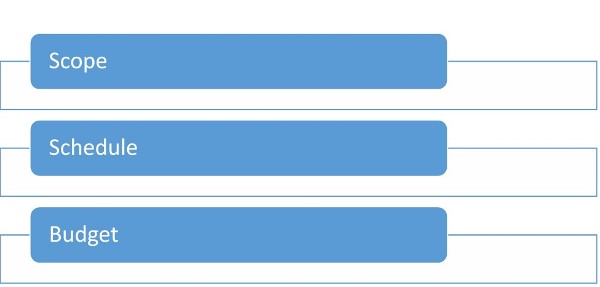in Engineering & Construction Projects
FEATURED PAPER
By Bob Prieto
Chairman & CEO
Strategic Program Management LLC
Florida, USA
In the management of engineering & construction projects it is accepted that a project can be described and best controlled against three baselines – scope, schedule and budget[1]. Together they define the project’s performance measurement baseline. This paper focuses on the scope baseline and suggests its primacy among the three baselines. An incomplete scope will, by definition, result in incomplete or inaccurate schedules and estimates.

What is scope?
Scope is the detailed set of deliverables and/or features for a project derived from the project’s requirements. Scope must clearly identify the work required to successfully deliver a given project. A more detailed description of the elements of scope is provided later in this paper and, while focused on engineering & construction projects, is more generally applicable.
Why is scope definition and management important?
Inadequate scope definition and management has been identified as a major source of degraded project performance. The International Association for Contract & Commercial Management (IACCM) has identified 10 common pitfalls for contract management. First among these is “lack of clarity on scope and goals”[2]. Others[3],[4],[5],[6] have identified that when scope is not clearly and accurately defined, overruns become systemic and scope creep is a consequence and the second highest rework indicator.
In addition to cost overruns arising from poor scope definition we also often see delayed completion and disputes, often extended in time. Poor scope definition affects all of the project’s baselines.
Inadequate scope definition and management is also a source of owner’s risk, referred to as ‘Spearin risk’[7],[8] in the US, for which no effective transfer or warranty mechanisms currently exists.
What creates scope problems?
There are many potential contributors to scope challenges with business and/or project complexity and uncertainty being the principle source of scope and goals issues. This inescapable challenge is exacerbated by[9]:
More…
To read entire paper, click here
How to cite this paper: Prieto, R. (2019). The Primacy of the Scope Baseline in Engineering & Construction Projects; PM World Journal, Vol. VIII, Issue IX, October. Available online at https://pmworldlibrary.net/wp-content/uploads/2019/10/pmwj86-Oct2019-Prieto-primacy-of-scope-baseline.pdf
About the Author

Bob Prieto
Chairman & CEO
Strategic Program Management LLC
Jupiter, Florida, USA
![]()
Bob Prieto is a senior executive effective in shaping and executing business strategy and a recognized leader within the infrastructure, engineering and construction industries. Currently Bob heads his own management consulting practice, Strategic Program Management LLC. He previously served as a senior vice president of Fluor, one of the largest engineering and construction companies in the world. He focuses on the development and delivery of large, complex projects worldwide and consults with owners across all market sectors in the development of programmatic delivery strategies. He is author of nine books including “Strategic Program Management”, “The Giga Factor: Program Management in the Engineering and Construction Industry”, “Application of Life Cycle Analysis in the Capital Assets Industry”, “Capital Efficiency: Pull All the Levers” and, most recently, “Theory of Management of Large Complex Projects” published by the Construction Management Association of America (CMAA) as well as over 600 other papers and presentations.
Bob is an Independent Member of the Shareholder Committee of Mott MacDonald. He is a member of the ASCE Industry Leaders Council, National Academy of Construction, a Fellow of the Construction Management Association of America and member of several university departmental and campus advisory boards. Bob served until 2006 as a U.S. presidential appointee to the Asia Pacific Economic Cooperation (APEC) Business Advisory Council (ABAC), working with U.S. and Asia-Pacific business leaders to shape the framework for trade and economic growth. He had previously served as both as Chairman of the Engineering and Construction Governors of the World Economic Forum and co-chair of the infrastructure task force formed after September 11th by the New York City Chamber of Commerce. Previously, he served as Chairman at Parsons Brinckerhoff (PB) and a non-executive director of Cardn0 (ASX)
Bob can be contacted at rpstrategic@comcast.net.
[1] Quality is a baseline parameter defined as meeting customer’s requirements, i.e., scope, schedule, budget
[2] Excellence in Contract Management; Common pitfalls from a practitioner’s perspective; IACCM; CPA Global 2016
[3] Scope Creep; Stephanie Gurlen; University of Missouri–St. Louis; 2003
[4] Investigation and Analysis of the Rework Leading Indicators in Construction Projects: State-of-the-Art Review; University of Texas Arlington; Elnaz Safapour; Sharareh Kermanshachi; Piyush Taneja; 2019
[5] Hollmann, John K. 2016. Project Risk Quantification: A Practitioner’s Guide to Realistic Cost
and Schedule Risk Management (Probabilistic Publishing: Gainesville, FL, USA).
[6] Guidance Note 1 Project Scope; Australian Government Department of Infrastructure and Regional Development; March 2017
[7] United States v. Spearin (248 US 132)
[8] The implicit warranty an Owner makes at contract to the Constructor, is the source of Scope/Spearin
Risk that Owners retain regardless of the contracting transfer method. Spearin Risk remains with the owner as uninsured risk associated with the completeness and accuracy of the project scope.
[9] Opinions about Project Scope Management; NYU; Henry Zhou; 2016









